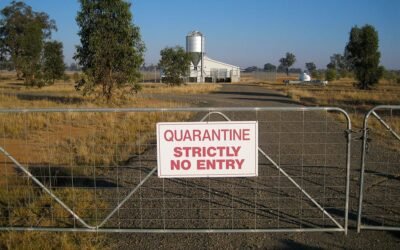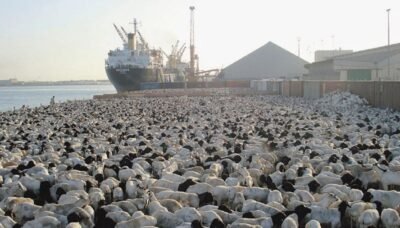Veterinary Quarantine

Dr. Sabah Hussein Alwan / veterinary expert
8/16/2024
A term derived from a Greek word meaning forty days. This is the period during which ships coming from countries infected with cholera (plague and yellow fever) are detained.
This is a period that is not based on a scientific or realistic basis, but rather on inherited ideas. The number forty was taken on the basis of extending the period of detention to ensure the safety of passengers on board these ships. The oldest records date back to the second half of the fourteenth century in the Mediterranean region. The authorities of the city of Venice imposed these restrictions in 1374, where they prevented the entry of passengers suspected of being infected with the international plague. In 1403, Venice established a system of detention for ships, and the neighboring city of Genoa established similar barriers against the plague.
These procedures support the use of this word in its humanitarian field as a beginning, and then its use developed in the world in animal quarantine, so the term (veterinary quarantine) appeared. The emergence of rinderpest in Europe in general and France in particular, where this infection led to the death of huge numbers of livestock, the disease imposed itself forcefully with the necessity of using this term, in building a new idea that is responsible for preventing the entry of animal diseases into any country.

The veterinary quarantine process is an integrated process that includes several aspects that work together to achieve the necessary success. The legal aspect is essential, which is the important and necessary aspect that gives the authorities the legal powers to implement everything necessary to achieve the goal of the quarantine process as a whole.
The administrative aspect is also necessary. There must be a specific, organized structure that undertakes the implementation of these laws on the ground, managed by known and responsible administrative systems that have a clear vision and plans, and cadres that are trained in the necessary manner to perform their tasks in the proper manner.
The other important aspect is the technical aspect, which includes a set of precise technical procedures necessary to be implemented on animals and animal products to be imported or exported, including the necessary permit procedures for each material, receipts, the nature of dealing with it, the materials necessary for disinfection and vaccination, and other procedures.
Therefore, the veterinary quarantine process is known as: a set of legal, administrative and technical procedures that must be taken on imported or exported animals and animal products. It is an integrated process that must not be marred by any defect in any aspect or element of its components. Countries have had many experiences in this field, such as:
First: Britain issued the first quarantine regulations in 1825
Second: The first conference was held in Paris in 1850 with the aim of organizing international quarantine for ships and international trade. The use of this term expanded from the field of human diseases to include animal diseases, and here the veterinary quarantine was established.
Third: In 1960, the member states of the World Organization for Animal Health (formerly the International Office for Epizootics) decided to establish a permanent committee to study the health regulations for the import and export of animals and their products. This committee revised the list of diseases prepared by the office and existing since 1924. Accordingly, new lists of diseases were prepared and then approved by the veterinary authorities in the session held in 1964. In 1968, the international animal regulation was approved under the name (International Animal Health Convention(
Importing animals or food from animal production that are infected or exposed to infection or contaminated materials such as meat, poultry, eggs, vaccines, biological materials, cultured tissues or semen, is one of the easiest ways to cause the spread of diseases between countries. Examples of this include what happened in Libya in 1988 when the screwworm disease was transmitted from imported live animals, lymphomatosis that affects cows in Saudi Arabia, rinderpest in Turkey, Syria and Iraq, contagious otitis and tracheitis that affects cows in Algeria, brucellosis and liver fluke in the United Arab Emirates, and many other examples that are widespread throughout the world.

Therefore, the principle of giving public authorities the authority to establish and implement the law and instructions related to veterinary quarantines has acquired great importance in preventing the spread and controlling the various diseases that exist or may enter the country.
The expansion of the concept of veterinary quarantine has been given great importance from a historical and realistic perspective as the use of information available by a legally authorized authority to prevent the spread of a specific disease or epidemic coming from abroad.



